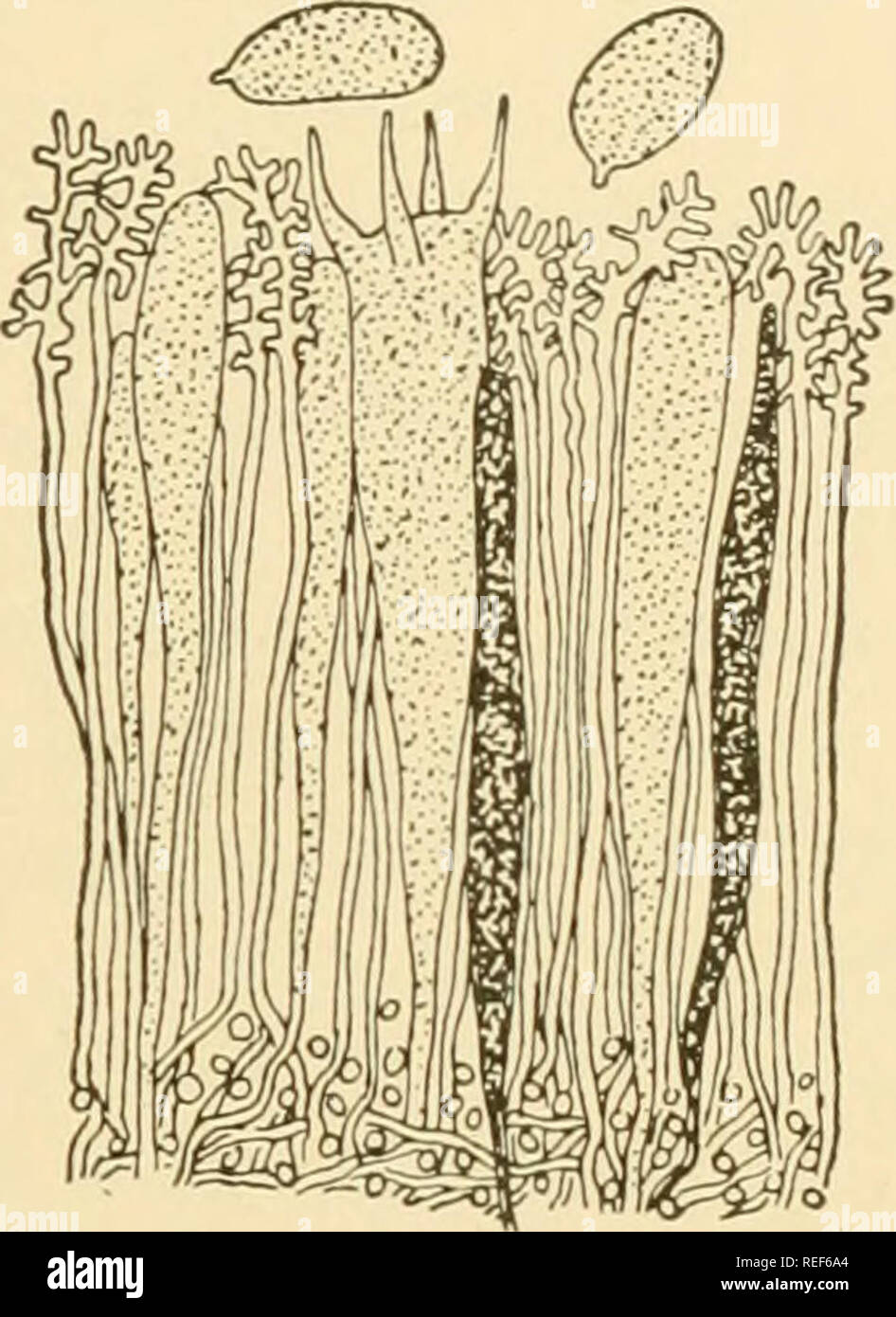. Comparative morphology of Fungi. Fungi. Fig. 285.—Aleurodiscus amorphus. 1. Section of hymenium with basidia and pseudo- physes. 2. Aleurodiscus sparsus. Section of an apical portion of fructification with basi- dia, dark gloeocystidia and denticulate dendrophyses. (X335; after Hoehncl and Litschauer, 1907.) Clavariaceae.—While the stichobasidial line discussed in the Cantha- rellales contains a few representatives of this family, the main group of several hundred forms is probably predominantly chiastobasidial and hence should be discussed under the Polyporales. The simpler genera, Pistilla

Image details
Contributor:
The Book Worm / Alamy Stock PhotoImage ID:
REF6A4File size:
7.2 MB (335.1 KB Compressed download)Releases:
Model - no | Property - noDo I need a release?Dimensions:
1349 x 1853 px | 22.8 x 31.4 cm | 9 x 12.4 inches | 150dpiMore information:
This image is a public domain image, which means either that copyright has expired in the image or the copyright holder has waived their copyright. Alamy charges you a fee for access to the high resolution copy of the image.
This image could have imperfections as it’s either historical or reportage.
. Comparative morphology of Fungi. Fungi. Fig. 285.—Aleurodiscus amorphus. 1. Section of hymenium with basidia and pseudo- physes. 2. Aleurodiscus sparsus. Section of an apical portion of fructification with basi- dia, dark gloeocystidia and denticulate dendrophyses. (X335; after Hoehncl and Litschauer, 1907.) Clavariaceae.—While the stichobasidial line discussed in the Cantha- rellales contains a few representatives of this family, the main group of several hundred forms is probably predominantly chiastobasidial and hence should be discussed under the Polyporales. The simpler genera, Pistillaria (two-spored basidia) and Typhula (four-spored basidia), develop clavate fructifications from sclerotia and are entirely covered with a hymenium. In a few species of Typhula, the hymenium is limited to the tops of the clubs. T. variabilis on dry stems and humus and T. Betae, on decaying roots of sugar and other beets, winter over with small sclerotia, each consisting of a light core and a dark rind which is cutinized on the outside. The sclerotia germinate in spring to a luxuriant mycelium whose hyphae, in T. variabilis, bear an immense number of elongate oidia on short branches (Brefeld, 1887). The hyphae intertwine to thick bundles which swell clavately and proceed to form hymenia. Kuehner (1926) figures typical transverse spindles in the basidial nucleus of Typhula Candida. In other genera, the fructifica-. Please note that these images are extracted from scanned page images that may have been digitally enhanced for readability - coloration and appearance of these illustrations may not perfectly resemble the original work.. Gäumann, Ernst Albert, 1893-1963; Dodge, Carroll William, 1895-. New York [etc. ] McGraw-Hill Book Company, Inc.